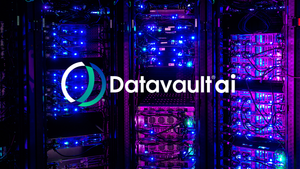
Financial markets are buzzing with renewed vigor as U.S. stocks open higher, positioning both the S&P 500 and Nasdaq Composite for yet another week of gains. This upward trajectory is largely fueled by an unwavering enthusiasm for artificial intelligence (AI) innovation and growing expectations for further interest rate cuts from the Federal Reserve. Despite the backdrop of an ongoing U.S. government shutdown, investor sentiment remains remarkably resilient, focusing instead on robust corporate performance and the promise of a more accommodative monetary policy.
The immediate implications are clear: increased investor confidence is fostering a "risk-on" environment, encouraging capital inflows into equities. However, this bullish sentiment also highlights a noticeable sectoral divergence, with growth-oriented and technology-heavy sectors, particularly those linked to AI, thriving while some traditional industrial and value sectors lag. The market's ability to shrug off political uncertainties underscores a deeper conviction in underlying economic strengths and technological advancements.
A Deep Dive into the Market's Upward Momentum
The current market rally is a testament to several powerful forces converging to create a distinctly positive outlook. The S&P 500 Index is on track for its second consecutive week of advances, exhibiting modest but consistent gains. Having closed at 6,715 last week, the index reflects a nearly 90% increase over the past three years, showcasing remarkable long-term strength. While minor pullbacks were observed on October 9th and 10th after reaching record highs, the index's consistent trading above its 50-day moving average signals robust underlying market health.
The Nasdaq Composite has been a stellar performer, reaching a fresh record high on October 10, 2025, and is projected to conclude the week with substantial gains. Its new all-time closing high of 25,137 on October 8th, coupled with an approximate 18% gain year-to-date, underscores the bullish sentiment surrounding technology and growth stocks. This momentum is primarily driven by the relentless pace of AI innovation, which continues to attract significant investor capital, particularly into large technology firms and semiconductor companies. Major partnerships, such as that between Advanced Micro Devices (NASDAQ: AMD) and OpenAI, have further electrified sentiment in this burgeoning field.
Beyond AI, the market's optimism is significantly buoyed by the anticipation of further interest rate cuts from the Federal Reserve. Market participants are increasingly pricing in multiple rate reductions by year-end, signaling a more favorable monetary policy environment. This expectation, combined with strong corporate earnings reports and upgraded outlooks for the second and third quarters, is reinforcing investor confidence. The prevailing hope for a "Goldilocks" economic scenario—where growth remains robust enough to support profits while inflation moderates—is a powerful catalyst. Even the U.S. federal government shutdown, which has delayed some economic data, has been largely overlooked by investors, who are instead concentrating on corporate fundamentals and forward-looking indicators.
The Winners and Losers in a Resurgent Market
The current market environment, characterized by AI-driven growth and the promise of lower interest rates, is creating distinct winners and losers across the corporate landscape. At the forefront of the beneficiaries are companies deeply entrenched in AI innovation and infrastructure.
Nvidia (NASDAQ: NVDA) continues its meteoric rise, dominating the AI GPU market with its accelerated computing solutions. Its Data Center segment alone saw a staggering 114.2% increase in fiscal year 2025, solidifying its market capitalization beyond $4 trillion. Other tech giants, including Microsoft (NASDAQ: MSFT), Alphabet (NASDAQ: GOOGL), Amazon (NASDAQ: AMZN), Meta Platforms (NASDAQ: META), Apple (NASDAQ: AAPL), and Tesla (NASDAQ: TSLA)—collectively known as the "Magnificent Seven"—are also massive winners, strategically embedding AI across their vast product ecosystems. Advanced Micro Devices (NASDAQ: AMD) has seen its stock soar following a multiyear AI chip supply agreement with OpenAI. Other notable beneficiaries include Dell Technologies (NYSE: DELL), Palantir Technologies (NYSE: PLTR), and Oracle (NYSE: ORCL), all reporting robust AI-driven demand and outlooks. Even Thomson Reuters (TSX: TRI) has been identified as a "quiet AI winner" for its strategic AI integrations.
The anticipation of interest rate cuts is also stimulating sectors traditionally sensitive to borrowing costs. Defensive and cyclical sectors are expected to outperform in the months following the initial Fed rate cut. Real Estate, Utilities, and certain Financials are poised to benefit. Homebuilders like Pultegroup (NYSE: PHM), D.R. Horton (NYSE: DHI), and Lennar (NYSE: LEN), along with building product companies like Builders FirstSource (NASDAQ: BLDR), and Mohawk Industries (NYSE: MHK), are buoyed by expectations of lower mortgage rates. Small-cap companies, often well-priced after periods of underperformance, are also expected to draw increased interest in this environment.
However, not all sectors are enjoying the ride. Consumer Discretionary (XLY) is experiencing a notable downturn, grappling with declining consumer confidence, a shift in spending towards essentials, and rising operational costs. While Tesla (NASDAQ: TSLA) is an AI beneficiary, its recent 22% drop earlier in the year due to weak electric vehicle sales heavily impacted this sector. Consumer Staples (XLP), traditionally a defensive sector, has also underperformed, remaining the weakest-performing sector for the year. Traditional value stocks may attract less investor interest compared to their growth-oriented counterparts. Large banks like JPMorgan Chase (NYSE: JPM) and Bank of America (NYSE: BAC) could face a squeeze on profitability if the yield curve flattens, impacting net interest margins. Companies slow to adopt and integrate AI solutions also risk losing their competitive edge, posing a significant challenge in an increasingly AI-driven economy.
Broader Significance and Market Dynamics
This current surge in market optimism extends beyond mere daily fluctuations, fitting into broader industry trends that are reshaping the financial landscape. The pervasive influence of AI is not just a passing fad but a foundational shift, driving a new wave of productivity and innovation across virtually all sectors. This technological revolution is creating a clear divide between companies that embrace and invest in AI and those that risk obsolescence. The "Magnificent Seven" tech giants, for instance, are not just leading the market; they are actively setting the pace for technological adoption and strategic direction for countless competitors and partners.
The Federal Reserve's dovish stance and the expectation of rate cuts signal a broader shift towards a more accommodative monetary policy, which typically encourages investment and economic expansion. This fits into a narrative of the economy potentially achieving a "soft landing" or a "Goldilocks" scenario, avoiding a severe recession while inflation moderates. Such an environment has profound ripple effects, from stimulating housing markets and infrastructure projects to reducing borrowing costs for businesses, thereby encouraging capital expenditure and expansion. Historically, periods of anticipated rate cuts, especially when a recession is averted, have often been precursors to sustained market rallies.
However, the market's resilience in the face of an ongoing U.S. government shutdown also highlights a crucial aspect of modern market psychology: a tendency to look past short-term political instability towards long-term corporate fundamentals and technological trends. While past shutdowns have caused temporary jitters, their long-term market damage has often been limited. This current episode reinforces the idea that investors are prioritizing structural growth drivers, like AI, over transient political impasses. Regulatory bodies, however, will undoubtedly keep a close eye on the rapid growth of AI, potentially leading to new policy discussions around data privacy, ethical AI, and market concentration, which could introduce new variables for the tech sector.
What Comes Next: Navigating the Future Market
Looking ahead, the market is poised for a dynamic period, characterized by both significant opportunities and potential challenges. In the short term, the focus will intensify on the upcoming corporate earnings reports for Q3. With official economic data releases delayed due to the government shutdown, these reports will serve as critical indicators of economic health and consumer strength. Investors will meticulously scrutinize these results for insights into market direction, particularly how companies are translating AI investments into tangible revenue and profit growth.
The long-term possibilities are largely tied to the continued evolution and adoption of AI. Companies that can effectively integrate AI into their operations, products, and services will likely maintain a competitive edge and drive sustained shareholder value. This may necessitate strategic pivots for many businesses, requiring significant investment in AI research, talent acquisition, and infrastructure upgrades. Market opportunities will emerge in ancillary services supporting AI, such as specialized data centers, AI-driven cybersecurity, and advanced software development.
However, potential challenges loom. Despite the current bullish sentiment, some analysts foresee a period of "digestion of recent gains" and a potential pullback, especially given that certain technical indicators suggest overbought conditions. Concerns about a potential "AI bubble" are also surfacing, which could lead to increased volatility and a more discerning approach from investors towards AI-related valuations. Furthermore, the timing and extent of future Federal Reserve rate cuts will remain a critical determinant of market trajectory, with any deviation from current expectations potentially triggering shifts in investor sentiment. Geopolitical tensions and unforeseen global events also remain perennial factors that could introduce market instability.
A Comprehensive Wrap-Up for Investors
In summary, the financial markets are currently riding a wave of optimism, driven predominantly by the transformative power of AI and the anticipation of further interest rate cuts. This confluence of factors has propelled the S&P 500 and Nasdaq Composite to strong performances, signaling a "risk-on" environment and renewed investor confidence. The immediate implications include a clear preference for growth-oriented and technology-heavy sectors, particularly those at the forefront of AI innovation, while some traditional sectors face headwinds.
Moving forward, the market's trajectory will be heavily influenced by corporate earnings reports, the Federal Reserve's monetary policy decisions, and the continued maturation of AI technologies. Investors should remain vigilant, recognizing that while the current outlook is largely positive, potential for volatility and sector-specific corrections exists. The "Goldilocks" scenario, though widely hoped for, is not guaranteed, and market participants should be prepared for various outcomes.
For investors, key takeaways include the importance of a diversified portfolio, with a strategic allocation towards companies demonstrating genuine AI innovation and robust growth prospects. Monitoring the Federal Reserve's communications, keeping a close eye on corporate earnings, and understanding the evolving regulatory landscape for AI will be crucial in the coming months. While the current market momentum is compelling, a balanced and informed approach remains paramount for navigating the complexities of the financial world and capitalizing on emerging opportunities.
This content is intended for informational purposes only and is not financial advice





